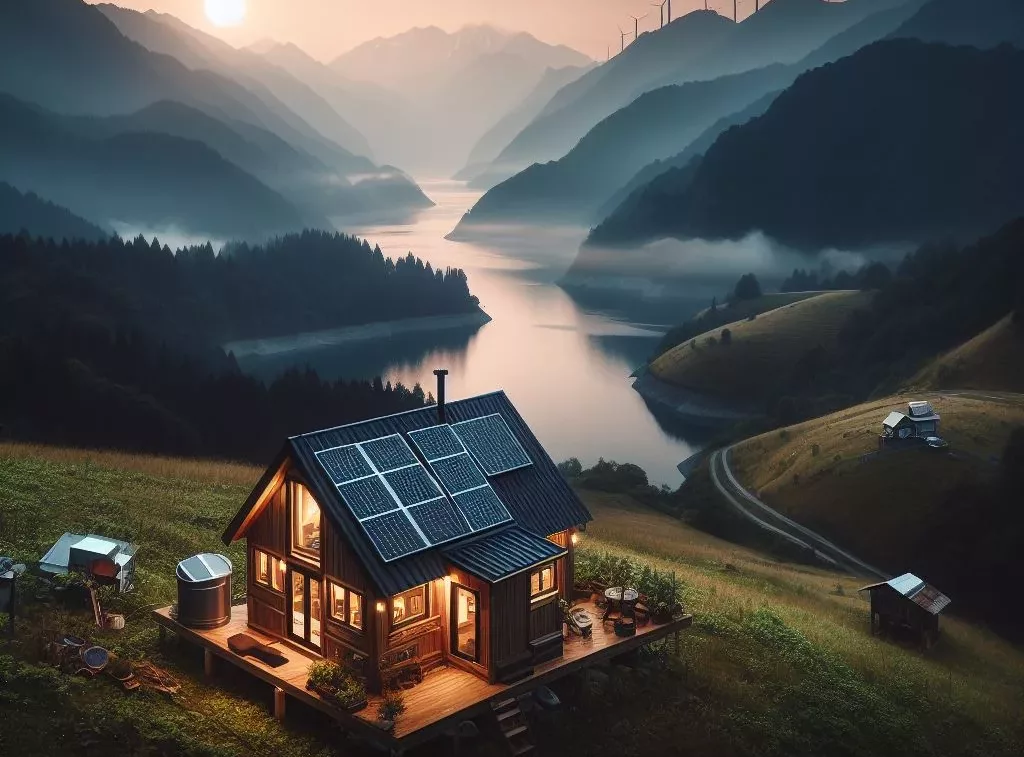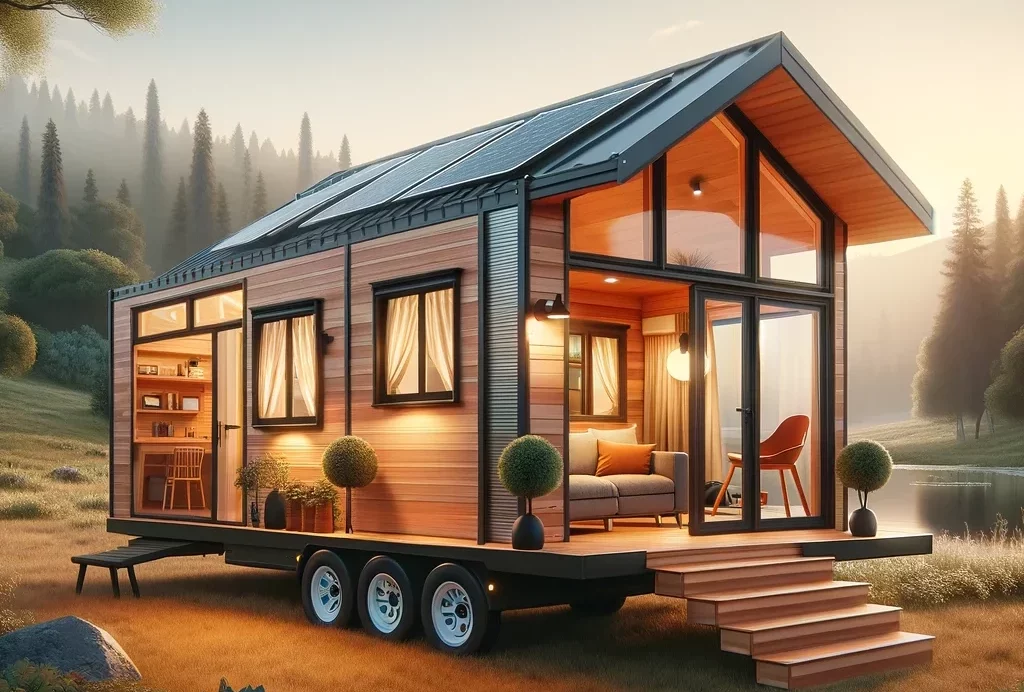Tiny homes stay small. Ideas don’t.
Like turning your roof into part of the landscape.
Adding a green roof to a tiny home or cabin isn’t just possible — it might be one of the most beautiful ways to blend sustainable design with a small, intentional space. Living roofs aren’t only for city skyscrapers or luxury eco-builds. They’re showing up in off-grid cabins, studio sheds, garden rooms, and tiny homes everywhere.
But what does it really take to add a green roof to a small space? And is it the right fit for your home?
Why Tiny Homes & Cabins Are Perfect for Green Roofs

So why are tiny homes and cabins such a natural match for living roofs?
- Lower cost due to smaller footprint
- Natural insulation and cooling benefits
- Seamless blending with the surrounding landscape
- Biodiversity boost for local wildlife
- Creative design choice that adds beauty and purpose
Your Path to Tiny Living — Build Intentionally. Live freely.
Designed for real life. Digital Download – Instant Access · $39
What to Know Before Adding a Green Roof to a Tiny Space
Weight Load Matters
Green roofs add weight, especially when wet. Tiny homes need structural support built for this. Lightweight systems and professional advice are essential.

Waterproofing & Drainage
Every green roof starts with solid waterproofing and proper drainage layers to protect the structure beneath.
Plant Choice by Climate
The best green roofs match local conditions. Think sedum, wildflowers, low-grow grasses, and drought-tolerant natives.

Not sure which plants will thrive on your tiny green roof? Check your plant hardiness zone to find out what grows best in your climate.
Maintenance Level
Living roofs can be low-maintenance but rarely zero-maintenance. Consider how often you can access and care for your roof garden.
The Best Tiny Spaces to Add a Living Roof
- Stationary tiny homes
- Cabins and cottages
- Outdoor kitchens or saunas
- Studio sheds
- Pergolas and carports
- Bus or van roofs (specialist builds only)

Green Roof Systems That Work for Small Spaces
| System Type | Best For | Why It Works |
|---|---|---|
| Modular Tray Systems | Beginners | Pre-built, easy to install and move |
| Sedum Mats | Lightweight builds | Instant coverage with low-grow plants |
| DIY Layer Build | Custom projects | Total design freedom |
| Wildflower Roof Blankets | Natural aesthetic | Creates an untamed, meadow-like look |
Tiny Home Tip: If you’re dreaming of a green roof but not ready to commit, start with a shed or pergola first. It’s a perfect test run for your plants — and your style.

FAQs: Green Roofs for Tiny Homes
Can any tiny home have a green roof?
Not every tiny home is built for the extra weight of a green roof. Always check with a structural expert if you’re unsure, and explore lightweight green roof systems designed for small builds.
Are green roofs expensive for small spaces?
Costs vary depending on materials and design, but a smaller roof often means lower costs overall. Starting with a shed or pergola can be a budget-friendly test run.
What plants grow best on a tiny green roof?
Sedum, wildflowers, drought-tolerant grasses, and native plants suited to your climate are excellent choices for green roofs in small spaces.
Do green roofs need a lot of maintenance?
Most green roofs are low-maintenance once established, but they still require occasional care like weeding, trimming, or watering during dry spells.

Is a green roof possible on a van or bus?
It’s rare, but possible with specialist design and structural support. Most green roofs work best on stationary tiny homes or cabins.
What’s the easiest way to start?
Try adding a green roof to a pergola, shed, or small outdoor structure first. It’s a perfect way to experiment without committing to a full home build.
Final Thoughts: Green Roofs Belong Wherever You Dream

Living tiny doesn’t mean thinking small. Green roofs can grow beauty, comfort, and wildness in even the smallest spaces.
Whether you’re ready to build your dream living roof or simply exploring what’s possible, tiny spaces offer big opportunities for creativity, sustainability, and connection to the natural world.
Ready to see how a green roof comes together? Explore the DIY Green Roof Guide for simple steps, helpful tools, and real-world tips.







